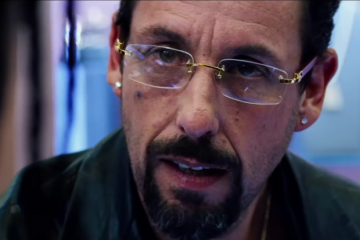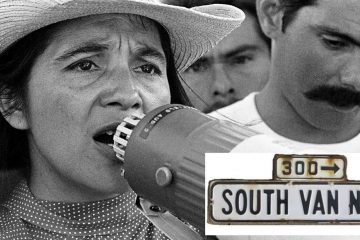California’s $220 Billion Budget is Doing What Trump Refuses to Do

Photo by Gage Skidmore
As recently as 2009, California was virtually broke. Facing a $24 billion deficit on a budget of approximately $100 million, the state furloughed employees, paid I.O.U.’s instead of tax refunds, and used every type of financial chicanery to move stuff around. At one point, the deficit was feared to be $41 billion. All we had was a soft, squishy mallet and every problem was a mole to be whacked. It almost made you feel sorry for the Terminator.
Barely a decade later, the state is flush with cash. Recording a $7 billion surplus on a stunning $222 billion budget, and with commanding Democratic supermajorities in both chambers of the state legislature, Gov. Gavin Newsom is in an advantageous position in this second year of his term to dole out cash as a means of laying out an agenda. He’s been called everything from a Democrat-in-name-only to an arrogant, authoritarian socialist, but what he really is is a mainstream Establishment liberal.
And this budget largely looks like what the federal government would be doing in the Bizarro Universe where Donald Trump did not win in 2016. It’s probably very close to what would have happened under President Hillary Clinton if Nancy Pelosi had 350 House Democrats and Chuck Schumer had 72 Senate Democrats — and Republicans were an annoying but largely neutralized inconvenience with only occasional flare-ups, like an easily treatable gonorrhea of the body politic.
Let us go on a short ride of mild wonkery together.
First, this is only a proposal. In May, the final numbers will be revised based on economic updates, and the 2020-21 budget isn’t enacted until July. But with that said, it’s full of positive stuff, including the first new state park since 2012.
With schools, there’s almost a billion for special-education and almost another billion for teacher retention, including $20,000 stipends to entice educators to stay in low-income schools for at least four years. We’re working toward a goal of universal Pre-K, plus nutritious school lunches that sound like the pet project of a certain former First Lady.
Ten years ago, the UC and Cal State systems were in serious trouble, but Newsom’s budget calls for five percent increases in funding for each — although they’re still planning to raise tuition one way or another.
Unauthorized immigrants who pay taxes still won’t be able to claim the earned-income tax credit (EITC), one of the best-documented ways for low-income families to escape poverty, but as CalMatters notes, Newsom will extend universal health-care to immigrants who are young adults and seniors.
There are technocratic climate-change-mitigation programs, along with a proposed November ballot measure to pass a $4.75 billion “climate-resilience bond” that will help with wildfires and rising sea levels. This builds on last November’s executive order declaring that transportation funding be tied to greenhouse-gas reduction, no small feat in a car-dependent state of 40 million.
In the realm of the truly visionary, the state might create its own generic drug label to bring down pharmaceutical costs, allocate enough funding to animal shelters to become a no-kill state in five years, and inch toward promising people that if they take time off to care for a new baby or a sick family member, they can’t be fired.
Perhaps most astonishing, we might close a prison, reversing the ghoulish legacy of the racist tough-on-crime era that scarred communities of color by over-incarcerating two whole generations of people.

California might actually close a state prison. Photo by Cal Matters
There are also some tax cuts for small businesses, plus prudent rainy-day fund measures that will provide a cushion during future downturns and help raise the state’s credit rating (which is currently AA, still two levels from the top and putting us about average among U.S. states). We’re set to have more than $19 billion socked away by 2023, although pensions and other commitments to workers — often referred to callously as “liabilities” instead of “promises to retirees who we signed a contract with when they worked for us” — total nearly a quarter-billion dollars.
It’s not uniformly good. The proposed vaping tax is bound to divide people, as is the possibility of expanding the right of the state to “conserve” (i.e., institutionalize) the mentally ill — something San Francisco already voted to allow over vociferous objections from homelessness advocates and the ACLU. And there’s one area where Newsom talks tough but still doesn’t quite seem to get it: housing. He calls homelessness the crisis of our times and put $1.4 billion behind it, but when asked why the state doesn’t have one single person coordinating all the various state agencies and programs tackling various aspects of the emergency, Newsom shut the subject down by saying he was the homelessness czar.
That’s not helpful or encouraging. But a new bill, AB 1845, might create such a cabinet-level post, while other Democrats have put forth legislation codifying that housing is in fact a human right, something Newsom has declined to opine on. How much richer does California need to get, exactly? The statement “All Californians deserve a home“ should be as banal and obvious as “We need the rain.” To Newsom’s credit, he’s been on a statewide homelessness tour this week, signaling that he might work with the federal government, too.
Further, to fulfill his (very ambitious) campaign promise of building 3.5 million new homes, it leans heavily on pre-existing promises from tech companies like Facebook. (I don’t especially want to carry my phone into, let alone reside at, a house Mark Zuckerberg built. Do you?) This remains the one area where California unquestionably needs Washington to lead — but there hasn’t been a federal home-building program in about half a century.
Overall, though, Newsom’s budget proposal is positive, and because of California’s gigantic economic clout, it’s more than just a symbolic counterweight to Washington D.C.’s priorities of rolling back clean-water legislation, assassinating foreign leaders, and caging children. So where does California get all this cash? It’s easy to think the state’s coffers are filled by a combination of almonds, algorithms, and alfalfa, plus cannabis, cabernet, and Captain America. Tech is certainly very important — Apple remains the state’s most valuable corporation — but Hollywood and agriculture are barely a blip. Financial services, health care, biotech, aerospace and even oil are all huge chunks of it. Plus we tax ultrarich people who obtain their affluence from God knows where. Always remember: There is no pure money.










